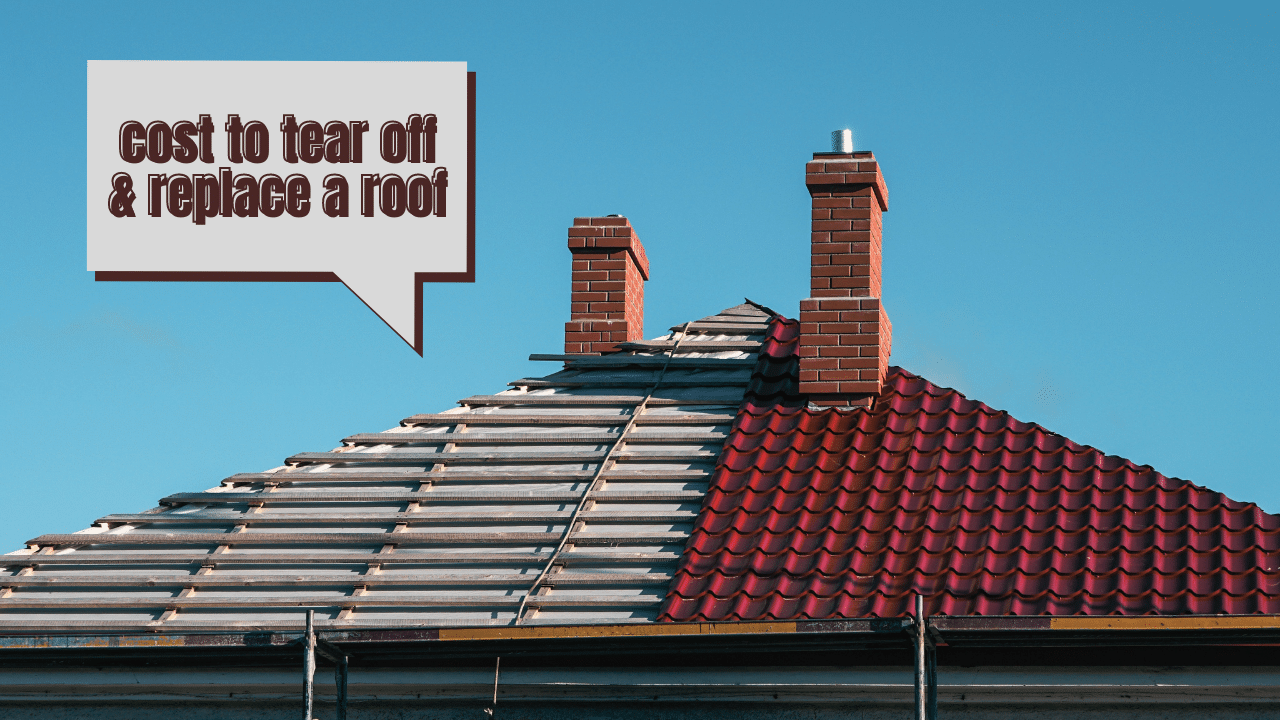Have you been dealing with a damaged or leaking roof? Or is the roof nearing the end of its expected lifespan? In that case, it’s probably time to consider a roof replacement. Homeowners are looking at spending $18,000 to $28,500 to tear off and replace their roofing. This ballpark estimate covers a 3-bedroom home with two bathrooms, architectural asphalt shingles, and just a bit of roof complexity. Depending on your current roof, the total size, and pitch, it can increase or decrease accordingly.
Before you consult local contractors to get different quotes, let’s discuss everything you need to know to calculate the average cost of roofing replacements.
Costs Factors in Tearing Off and Replacing a Roof

Naturally, your roof replacement costs will depend on different factors. On the low end, you may spend $18,000 with the thriftiest materials. Prices may increase up to $28,500 (or more) for extensive roofs with massive square footage and high-end materials. (Related: Roof Replacement Cost & Consumer Guide)
Most quotes include:
Important note: In getting a quote from a local roofing company, ensure that it includes new underlayment installation and chimney refinishing. Ideally, the quote must also cover an ice-and-water shield for your roof.
Size of the Roof
Your roof size is a crucial factor in calculating your roof replacement costs, as it determines the amount of material you need. For your reference, the roof size is commonly measured using “roofing square, " equivalent to 100 square feet.
Roof Slope
The slope of your roof will also determine the total costs of the roof replacement project. If you have a sloped roof, the labor costs may be higher than what you'd typically pay for a flatter roof– as the labor is more intensive. A roof with a slope also requires installing an underlayment system.
Roofs that are genuinely sloped may be an expensive undertaking, considering the scope of the project and the intensive labor needed.
Roofing Material
Another crucial factor to take into consideration is your chosen roofing material. Most commonly, asphalt shingles prove to be a crowd-favorite choice as it is cheaper than both metal and slate materials. (Related: 6 Types of Roofing Materials: Pros, Cons, and Price Comparisons)
But, metal and slate roofs are highly durable, so you may want to consider investing. Not to mention, they are sustainable and eco-friendly picks.
Should You Move Ahead with Roof Replacement?
Suppose your roof has seen better days and is currently severely damaged. In that case, a roof replacement project is crucial to ensure the safety of all occupants in your home. Though it can be a costly project depending on your preferred materials, safety must always be a priority!
Here are some tell-tale signs of a roof replacement (instead of a simple repair):
In getting quotes from local roofing companies, opt to get at least three or four options. This will allow you to compare the best price for your budget and ultimately make the best decision for your situation.
Take the time to research your contractor options and your roofing material to ensure you'll get the most out of your new roof for a long time. Always keep in mind that it is a hefty investment. As such, your roof replacement project must be taken into careful consideration every step of the way!
Frequently Asked Questions (FAQs)
How long does it take to install a new roof?
Generally, it varies on a case-to-case basis. The duration of your roof replacement project depends on the weather in the region, roof size, preferred materials, and more. Most contractors may get the job done in as little as 1 to 3 days.
How long will my new roof last?
The average lifespan of your new roof ultimately boils down to your chosen roofing material. The condition your roof is exposed to over the years will also affect its longevity. For your reference, here's a quick overview of the lifespan with these common roofing materials:
I have roof leaks at home. Is it time for a new roof?
Older roofs with worn-out spots and missing shingles are visible signs that you need a timely roof replacement. If there are leaks around a roof vent or only a single missing shingle, you may get by with a simple repair. The best way to know is to hire a professional roofer to inspect and repair your roof.
Is it possible to put the new roof over my existing roof?
Several homeowners may want to install their new roof directly over the existing one to cut costs. In some cases, this may be applicable by simply reroofing over the old one instead of tearing it off. If the roof has several layers, you will have no choice but to remove them in place.
What is the best time to consider a roof replacement?
Based on seasons, the best time for a roof replacement project is during the fall or spring. It has suitable weather conditions to make it easier for contractors to work on the new roof installation. Summer months may not be ideal as it is the peak season for most roofing companies.
